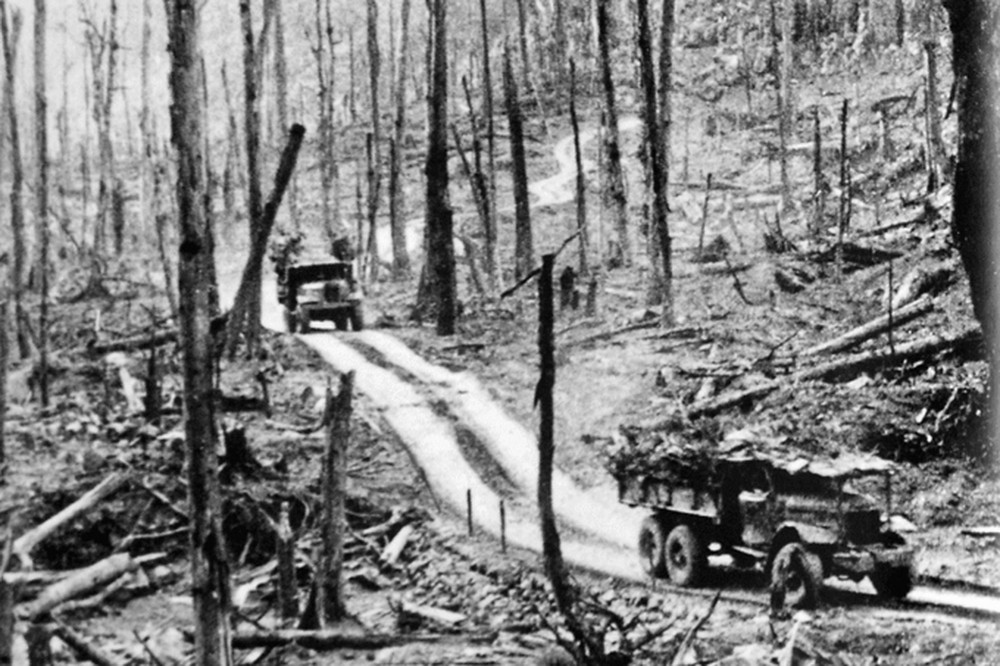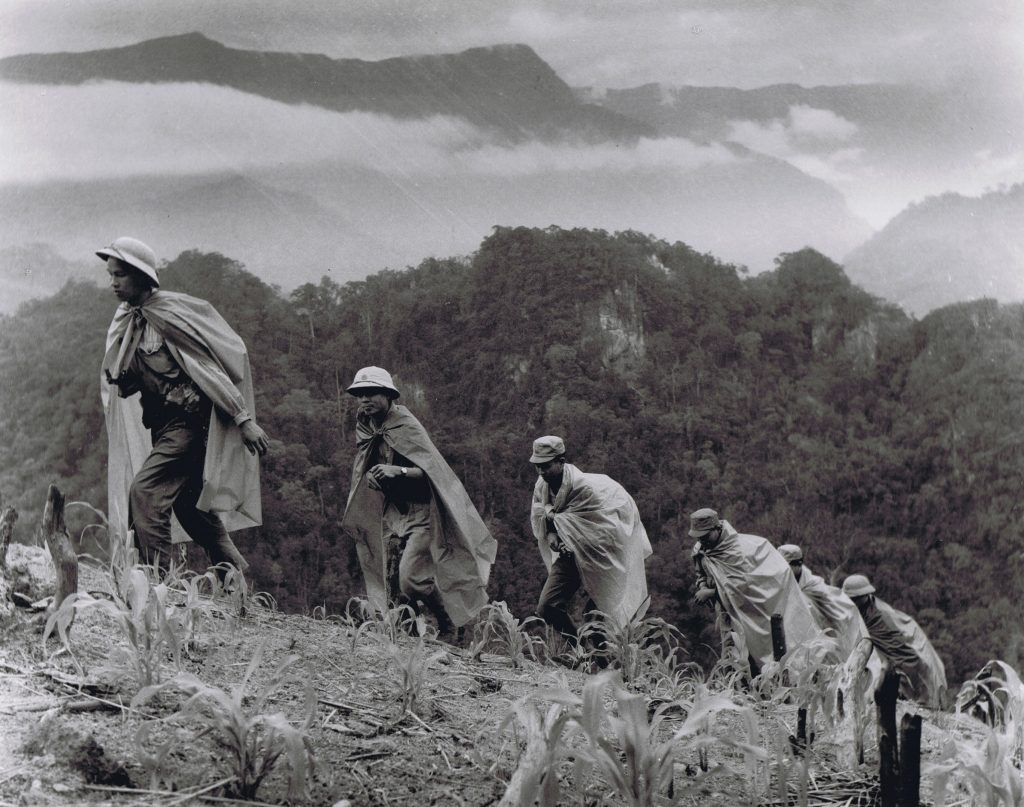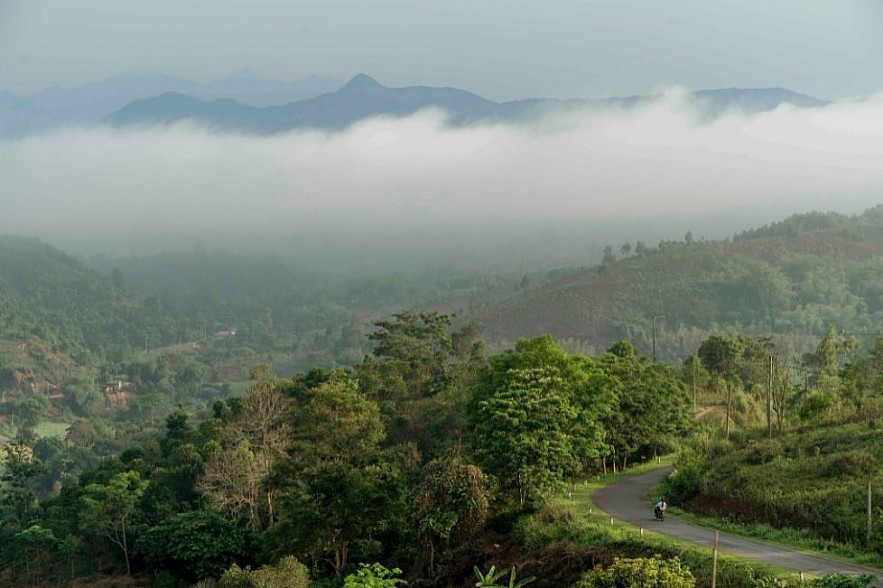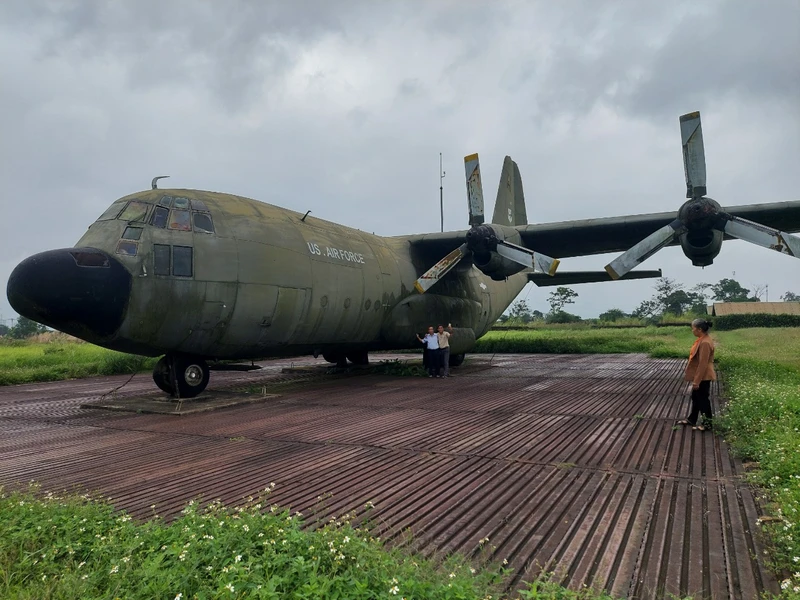The Ho Chi Minh Trail also known as Truong Son road stands out as one of the most spectacular and unique roads in my country. At the moment, the road is relatively unknown and sparsely populated, allowing bikers to experience that feeling of wind in the hair, fresh air and exploring the world. It’s the kind of thrill that tickles something deep in the primitive mind that reminds you that you’re human of Vietnam.
The stretch of road we’re talking about here runs from Khe Sanh in the south to Phong Nha Ke Bang National Park in the north. The milestones along the road will tell you that this stretch is 237 kilometres long. Mile marker 237 is at Khe Sanh itself, and the countdown continues until the road reaches its destination at Khe Gat.

Whether you take it alone or in a group, it’s sure to be one of the highlights of your motorbike trip in Vietnam. So we thought we’d put together this handy guide to help you know what you’re getting into and what to look out for.
History of the Ho Chi Minh Trail
The Ho Chi Minh Trail was a complex series of country roads used during the war to transport supplies from the north to the south. Many of these roads crossed into Laos, skirting the mountainous and wooded border to bypass the Demilitarised Zone (DMZ). Driving any kind of vehicle is dangerous work, and drivers usually only cover a 20-kilometre stretch of road that they drive night after night. There’s a good reason for this. The trucks had to drive at night with a minimum of lights to avoid being detected by the American air units. The drivers had to know every inch of the road to minimise the danger.

The Ho Chi Minh Trail is often confused with the Ho Chi Minh Road, but they are different. The Ho Chi Minh Highway is a motorway that runs north-south along Vietnam’s mountainous interior. It is still often referred to as the Ho Chi Minh Trail. However, for the purposes of this article, the two names are more or less interchangeable. The Ho Chi Minh Trail West, the part of the road we are talking about here, was built between 1975 and 1979.
This stretch of road was closed to the public until around 2009. Before that, it was only open to the military and local hill tribes. The area is sparsely populated, unless you count the trees.
The road to the Ho Chi Minh Trail
The road is entirely tarmac and looks like a two-lane motorway. In general, it is in fairly good condition, like most national roads in Vietnam. As it is mainly concrete, the road can be very hard on tyres. If you are driving on old tyres, you should consider changing them before using this road.
Unlike Highway 1, the country’s main north-south corridor, traffic on the Ho Chi Minh Road is very light. On the Ho Chi Minh Highway West, it is not uncommon to spend long periods of time without seeing anyone. For those who live in the big cities, this solitude can be very refreshing.
Make sure you take provisions with you if you are not on a group tour. You’ll be travelling long distances without seeing any services, or anyone for that matter. If your knowledge of Vietnamese is poor or non-existent, you’ll want to know about some of the off-road paths that head towards the coast, where civilisation is more plentiful.
There are a number of off-road routes leading eastwards, which join up with the Ho Chi Minh East road. If you have any problems – cycling, health, weather or otherwise – it may be wise to follow one of these forks. The road will lead to an area where you are likely to find help and shelter. Look out for the blue road signs indicating that you are approaching a major intersection.
Highlights from south to north
For the purposes of this article, we will describe the route from south to north. If you’re going the other way, don’t worry: just consider the information in reverse.
1. Khe Sanh and the surrounding area
The road starts in Khe Sanh, which saw some of the fiercest fighting of the war. It’s no coincidence that there’s a large monument in town to celebrate the North’s victory. It’s worth seeing if you’re in town and fancy a drive – it’s not a particularly big town anyway.

Just north of the city, at kilometre 233, is the former Ta Con airbase used by the Americans during the war. It’s now a museum with tanks, an old C-130 aircraft, various weapons and unexploded ordnance. The English information in the museum is not entirely accurate and the English itself is not properly composed. Taken for what it is, however, the museum can serve as an interesting brief stop to see what was once a crucial wartime airbase.

We recommend filling up at Khe Sanh before heading north, but in case you forget, there’s a petrol station in the small town of Huong Phung, some 20km north of Khe Sanh. It’s also a place where you can find amenities like a mechanic, ATM, hotel, coffee and food.
Heading north out of Huong Phung, you won’t see any sign of civilisation for a while – except for the road itself.
Note on stops: at kilometre 166 there’s a waterfall that makes a nice roadside stop for a photo, a bite to eat or just to rest your legs. It’s well worth a stop as it’s right beside the road.
North of Huong Phung, you’ll come across Sa Mu mountain. This is the highest mountain you will encounter along this route, at 1100 metres. Don’t be surprised if you encounter rain or clouds on the way up, as there is plenty of humidity at altitude.
2. Long Son town: half way up
The picturesque town of Long Son in Quang Binh province lies halfway between Khe Sanh and Khe Gat. If you choose to make this trip in two days instead of one, staying in Long Son could be an excellent choice. Nestled in a valley with a small river running through it, the village offers a chance to relax and forget you’ve ever seen a big city.
The Duc Tuan Hotel is the only real option for a place to spend the night. You can also find coffee and food in town. There is a petrol station, but it is notoriously unreliable and often closed.
An important feature of Long Son is the bus station that runs to Dong Hoi. If your bike is in poor condition and you can’t get it repaired there, or if you’re ill or injured, you can put your bike on the bus and head for the coast where services are more available.
3. From Long Son to Phong Nha
Around 20km north of Long Son is the Rinh Rinh (pronounced Zin Zin) bridge, where you’ll also find a crossroads. It’s a wonderful place to stop for photos or a picnic. Note that there is a ranger station nearby where you can ask for help if you get into trouble – hopefully you won’t. There is a junction here that leads to the coast if you need to leave the motorway for any reason.
As you head north, the landscape becomes even less populated and more isolated. You’ll start to see the limestone karst mountains that make Phong Nha so iconic. These imposing, weathered pillars are covered in jungle and soar into the sky in a most unusual way. They are the result of countless years of erosion, and no matter how many times a person sees them, they always look wild and exotic. Don’t expect any services on this stretch, so be prepared to carry supplies such as petrol, food, tools or spare parts.
The road winds through hills and forest as you cross the U Bo mountains, with more turns than a bowl of spaghetti. It’s one of the most exciting parts of this already exciting route. U Bo is not far from the southern end of Phong Nha, where this stretch of road ends.
4. Approaching Phong Nha
You will then arrive at the Tra Ang crossroads. Here, you can choose to take the DT20 or the QL15 to Son Trach, the main town of Phong Nha. For reference, most people who travel this way simply call the town Phong Nha.
An interesting note on the DT20/DT562: this road was known as the ‘victory road’ during the war, as many supplies crossed the Laotian border via this route. The story goes that the majority of those who built it were student volunteers with an average age of 20.
Towards the south of Phong Nha Ke Bang National Park, you’ll find some spectacular sites. These include Paradise Cave and Dark Cave, as well as Nuoc Muoc, an underground river that surfaces here. No one knows exactly how long the river is, but it certainly travels underground from Laos.
What to look out?
Because this road is so isolated in many places, a breakdown can be more than just a pain in the backside: it can be a serious problem. If you break down at night, far from a town, for example, there’s little chance of anyone passing by. Even then, they may not be obliged or able to help you.
Similarly, if you suffer a minor injury along the way, you will probably have to deal with it yourself. All reasonable medical facilities can be found towards the coast, in the larger towns, or at either end of the road in Khe Sanh or Phong Nha.
You will need a licence to drive legally in Vietnam. If you drive without a licence and have an accident, your insurance won’t cover you. Keep this in mind when travelling anywhere.
Because of this remoteness, we recommend that you take first aid supplies with you. This means, at the very least, a first aid kit, a tool kit and a spare inner tube in case you get a puncture. Also make sure you have a phone with a local sim card. Viettel, Mobifone, Vinaphone or any other major national operator is suitable. You’ll need to be able to make a phone call or use 3G/4G if it’s available. You will need at least one translation application, especially if your Vietnamese is limited.
Additional information
You might also consider taking some extra fuel with you. Even a one-litre bottle of water filled at a petrol station can get you out of trouble, as you certainly don’t want to be pushing your bike around in the wild.
It’s also sensible to take food and water with you. If you’re hungry in the middle of the jungle, it’s better to eat a sandwich you’ve brought than to search for a wild banana tree.
You also need to consider the weather. Rain is fairly common in the region, especially at higher altitudes. A sunny day can turn into a rainstorm in the blink of an eye, so always keep rain gear to hand.
At the end of the road
The kilometre markers end at 0 in Khe Gat. There’s nothing particularly interesting to see at this last kilometre marker, so we recommend you don’t waste your time trying to find it.
However, if you started this hike in the south and ended it at Phong Nha / Ke Bang in the north, congratulations, you’ve found one of the country’s best national parks. It’s a paradise for outdoor enthusiasts. With countless caves and caverns (including the world’s largest cave), river kayaking, rafting, hiking, jungle trekking and zip-lining, it’s hard to get bored.
If you’re in the mood to relax after a long day on the road, that’s also possible. There are guesthouses along the river, where you can curl up in a hammock and enjoy the sunset.
Of course, Phong Nha has some spectacular back roads that are worth exploring with the right motorbike. Just ask around and your local motorbike enthusiast will be able to give you some fun directions. You can also check out our guide to motorbike routes and activities in the area.
For now and the foreseeable future, it’s one of the best adventure routes in Asia. The lack of traffic, the exotic scenery and the undiscovered cool factor make it one of our favourite routes. Whether you’re travelling with us, with another group or on your own, we think it will also be one of the highlights of your motorbike adventure in Vietnam.
